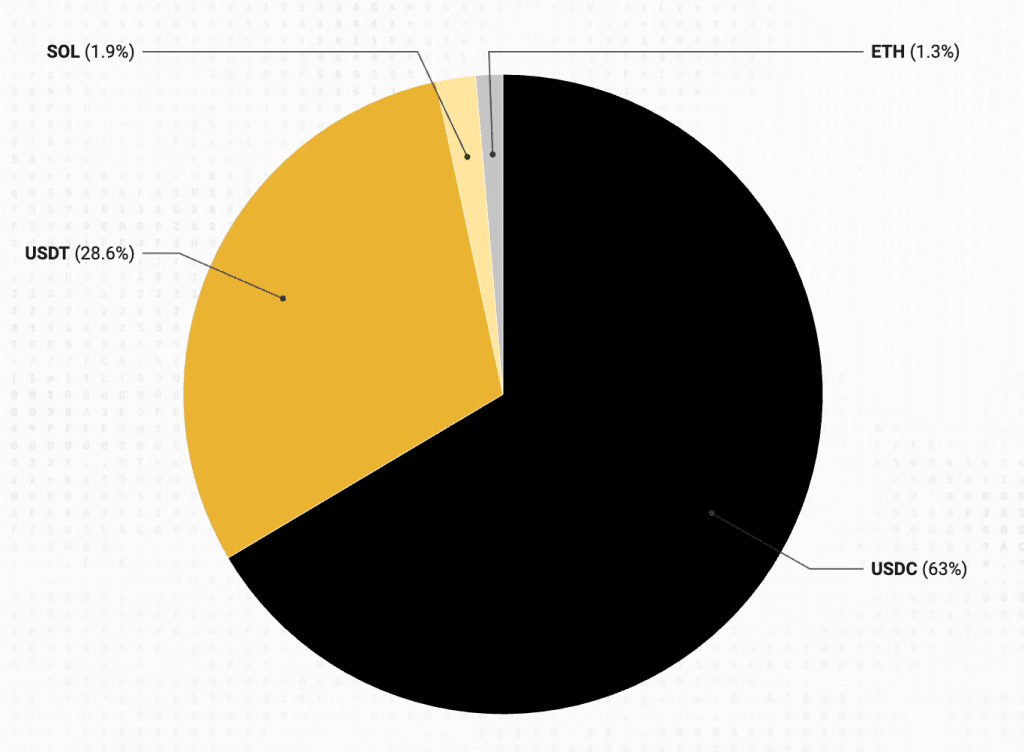The report from Pantera Capital shows that 9.6% of cryptocurrency professionals now receive their salary in stablecoins, with USDC capturing 63% market share, signaling the maturity of on-chain financial infrastructure.
A quiet yet disruptive transformation is reshaping the financial operations in the cryptocurrency asset industry. According to the latest report published by venture capital firm Pantera Capital, the number of professionals receiving salaries in digital assets has tripled over the past year, reaching 9.6% of the total workforce in this field.
Data collected from over 1,600 professionals in 77 countries shows a clear trend towards pure blockchain salary systems and the strengthening of stablecoins as a reliable corporate payment tool. This phenomenon not only reflects the growing acceptance of digital assets but also demonstrates the maturation of decentralized financial infrastructure.
 Salaries paid in cryptocurrency assets in 2024 are expected to triple compared to 2023. Source: Pantera Capital report
Salaries paid in cryptocurrency assets in 2024 are expected to triple compared to 2023. Source: Pantera Capital report
In-depth analysis from the report reveals a strategic competition shaping the stablecoin market. Despite USDT still dominating global trading volume with a market capitalization exceeding $140 billion, Circle's USDC accounts for up to 63% of the total value of salaries paid in cryptocurrency.
The main reason for this dominance lies in the aspects of infrastructure and regulatory compliance. The Pantera report indicates that leading payroll service providers such as Deel, Remote, and Rippling currently do not support payments in USDT, creating a natural competitive advantage for USDC. This inadvertently makes USDC the default choice for corporate financial operations, highlighting the importance of the partner ecosystem in shaping technology adoption.
 The percentage of people being paid in cryptocurrency. Source: Pantera Capital report
The percentage of people being paid in cryptocurrency. Source: Pantera Capital report
The dominance of USDC in the salary payment segment reflects Circle's long-term strategy to position this stablecoin as a core tool for institutional payments and B2B financial infrastructure, rather than merely a trading asset. Recent moves by Circle, from strategic partnerships with the Intercontinental Exchange to applying for a federal banking license in the US, demonstrate the ambition to build a fully compliant payment, custody, and settlement system.
The legal context is also facilitating this trend. The introduction of the GENIUS Act in the US, seen as beneficial for compliant stablecoin issuers like Circle, further strengthens USDC's position in enterprise applications. This creates a positive cycle where legal compliance leads to broader adoption, thereby further solidifying market position.
The report also reveals other trends indicating an increasingly pronounced professionalization of the industry. Nearly 88% of token allocation schedules are now set over a four-year period, a standard aimed at retaining talent and creating long-term engagement, similar to equity vesting models in traditional tech industries. This reflects a shift from short-term speculative thinking to sustainable growth strategies.
Notably, data shows that practical experience is being valued more than academic degrees in this industry. Professionals with a bachelor's degree earn a higher average salary than those with a master's or doctoral degree, reflecting the high applicability and rapid development of the blockchain technology field. This trend reinforces the view that the cryptocurrency industry is shaping a new value system, where practical skills and adaptability are prioritized over formal education.


